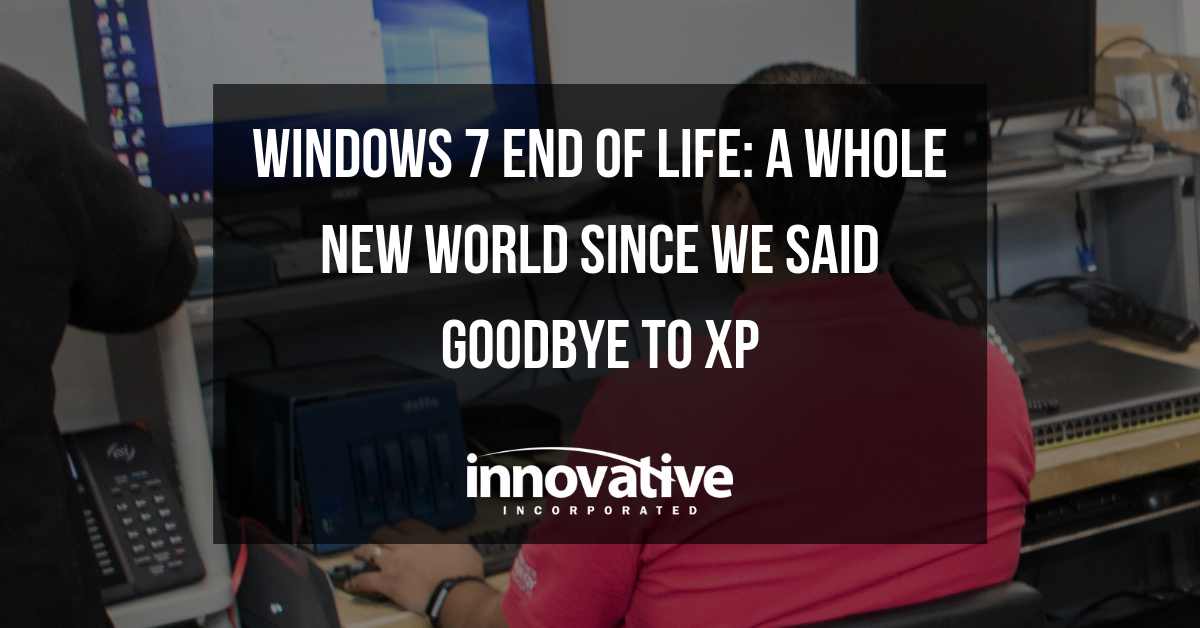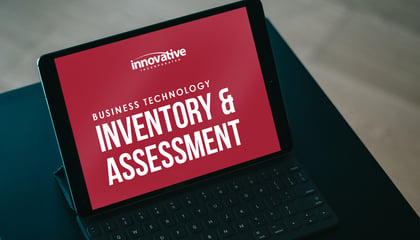Windows 7 End of Life: A Whole New World Since We Said Goodbye to XP
Do you have computers in your business operating on Windows 7?
Do you feel like you just upgraded away from Windows XP?
If that’s the case, you were most likely utilizing Windows XP beyond its April 8, 2014 end of life date and managed just fine without upgrading immediately. So, it makes sense that you are probably not too concerned about upgrading away from Windows 7 any time soon.
You survived the last end of life date just fine, and you’ll get through this one too, right?
Wrong.
You will eventually face hardware and software compatibility issues with Windows 7, as it will no longer run on newer devices. Additionally, up-to-date software and other line-of-business applications will eventually lose compatibility with Windows 7.
BUT - the most immediate issue you can expect to see following Windows 7 end of life in January is network and data security vulnerabilities.
In just five seemingly short years since Windows XP end of life, the information technology landscape has changed dramatically. Businesses that fail to upgrade to Windows 10 before January 2020 will face serious consequences this time around.
Toto, We’re Not in 2014 Anymore
While ransomware has been a valid threat to business since the early 2000s, Windows XP end of life in early 2014 came in the very early stages of a drastic spike of ransomware attacks, specifically those targeting businesses.
There were 3.2 million ransomware attacks reported worldwide in 2014, while 2018 saw 206.4 million reported ransomware attacks.
Not to mention, Q1 2019 has already seen a 195% increase on ransomware attacks against business compared to Q4 2018.
CPO Magazine lists ransomware attacks on Internet of Things (IoT) devices as the number one information security risk of 2019. The more your business depends on connected devices and information, the greater power a ransomware attack has over your business. This means you may be even more likely to pay the ransom in hopes of returning to full functionality.
In 2014, many businesses could withstand a few hours or even a few days of downtime, but in today’s environment, even a few hours without access to client information, company records, and functionality of connected equipment and other devices could ruin your business.
What this means for your outdated operating system
When Microsoft ends support for an operating system they stop pushing updates including necessary security patches. As Microsoft identifies bugs and/or vulnerabilities, they regularly push updates that include security patches to keep their operating systems secure. These patches are absolutely necessary to keep your network and data protected.
So I’ll just update in January, right?
Maybe.
Depending on factors like the size of your organization, the number of users, age of hardware, versions of other software programs and line of business applications, upgrading may not be as simple as you think.
You’ll want to carefully plan for your upgrade with your IT team to strategically plan for associated costs like hardware and/or software upgrades and well as minimizing the impact to your organization and employees.
What does this mean for my server?
Outdated server operating systems create the same security concerns as device operating systems. January 14, 2020, is also the end of life date for Microsoft Server 2008 and Server 2008 r2. Server migrations are complex, with many variables. This may also be a great time to evaluate the number, size, and types of servers in your business. With the changing technology landscape, many businesses are evaluating alternatives to a server environment and/or consolidating to a fewer number of servers.




